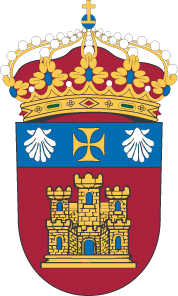Por favor, use este identificador para citar o enlazar este ítem: http://hdl.handle.net/10259/9303
Título
Exploitation of indoor illumination for typical flat dwellings in the Mediterranean area
Autor
Publicado en
Energy Reports. 2023, V. 9, p. 1473-1489
Editorial
Elsevier
Fecha de publicación
2023-12
ISSN
2352-4847
DOI
10.1016/j.egyr.2022.12.085
Résumé
The 2018/844 Energy Performance of Buildings Directive (EU) has widened the scope of appropriate design of buildings from a pure energy performance and carbon emissions perspective to a wider scope that includes indoor comfort, and indoor air quality among others. To this effect, external parameters, especially solar energy, have a strong impact on the energy performance of buildings in Mediterranean regions, which requires careful consideration when it comes to benefiting from natural lighting while avoiding solar overheating. This paper addresses the considerations of natural lighting in the deep renovation of a housing block in the Mediterranean climate of the Republic of Malta, comparing some of the usual illuminance ranges to achieve optimal conditions based on international recommendations. DesignBuilder v7.0.0.102 has been the selected software to model the building that has been calibrated through experimental measurements. The model enabled the natural lighting conditions in the building evaluated and the effectiveness of suggested improvements to be determined. Results pointed out that the building under study satisfies the international standards about the prevention of visual discomfort only. Increasing the size of windows in identified zones, especially the first floor, was found to help improve other natural lighting characteristics. One of the proposed designs (Model 6) that replaces single-glazed with double-glazed windows that include an external spectrally-selective coating would significantly improve access to natural light bringing the building closer to the recommended levels of Annual Sunlight Exposure and reducing artificial lighting usage by up to five times. The relocation of room spaces could also reduce the use of artificial lighting.
Palabras clave
Daylighting analysis
Daylight simulation
Energy efficiency
Radiance
Visual comfort
Materia
Electrotecnia
Electrical engineering
Iluminación
Lighting
Versión del editor
Aparece en las colecciones
Documento(s) sujeto(s) a una licencia Creative Commons Attribution-NonCommercial-NoDerivatives 4.0 Internacional











